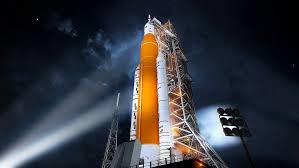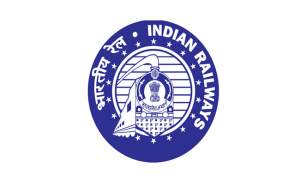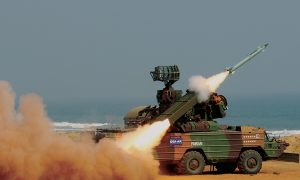NASA is targeting the next launch attempt of the Artemis I mission for Monday, November 14 with liftoff of the Space Launch System (SLS) rocket carrying the Orion spacecraft planned during a 69-minute launch window that opens at 12:07 a.m. EST. The mission will pave the way for a crewed test flight and future human lunar exploration as part of Artemis.
Following Hurricane Nicole, teams have executed thorough assessments of the rocket, spacecraft, and associated ground systems and ensured there were no notable impacts from the severe weather. Camera inspections show very minor damage such as loose caulk and tears in weather coverings. The team is also conducting additional onsite walk-down inspections of the vehicle soon.
Artemis-I
SLS is the most powerful vehicle ever developed by NASA, and is the foundation of its Artemis project which aims to put people back on the lunar surface after a 50-year absence. This spacecraft will loop around the Moon on a big arc before returning home to a splashdown in the Pacific Ocean. SLS will be pulling 39.1 mega newtons of thrust off the pad. It is 15 per cent more than the Saturn V rockets that sent the Apollo astronauts on their way to the Moon in the 1960s and 70s.
Artemis-1 is an uncrewed flight test to launch SLS and send Orion around the Moon and back to Earth to thoroughly test its system before flights with astronauts. Earlier, NASA called off the second attempt to launch this ambitious test flight because of a stubborn leak that delayed fueling. A hydrogen fuel leak detected about seven hours before liftoff thwarted the attempt. NASA engineers repeatedly tried to staunch the fuel leak during the Artemis 1 countdown but all three attempts failed.
The primary goals for Artemis I are to demonstrate Orion’s systems in a spaceflight environment and ensure a safe re-entry, descent, splashdown, and recovery prior to the first flight with crew on Artemis II.




























 WhatsApp us
WhatsApp us